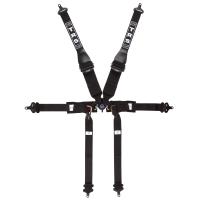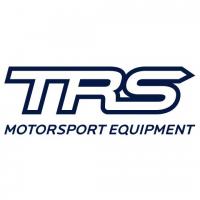Here at Merlin we sell both TRS and Schroth harnesses. This document has been written to highlight the difference between two different manufacturer versions, showing the features that distinguish them from each other.
There is a clear price difference between the two manufacturer versions, the Schroth being in the higher price bracket, roughly a £100.00 more. However we consider both products equal in terms of the value they offer for money.
The harnesses we’re comparing here are the Formula harnesses produced by TRS and Schroth. TRS call theirs the 'Pro Superlight Single Seater (FHR only)' and Schroth call theirs the 'Formula 2x2 Single Seater' which is also FHR use only.
TRS harnesses are manufactured in England. Schroth harnesses are manufactured in Germany.
It’s worth taking a very good look at both before making a decision as there are some noticeable differences that are not so obvious when looking at these online generally or in our catalogue.
First Glance
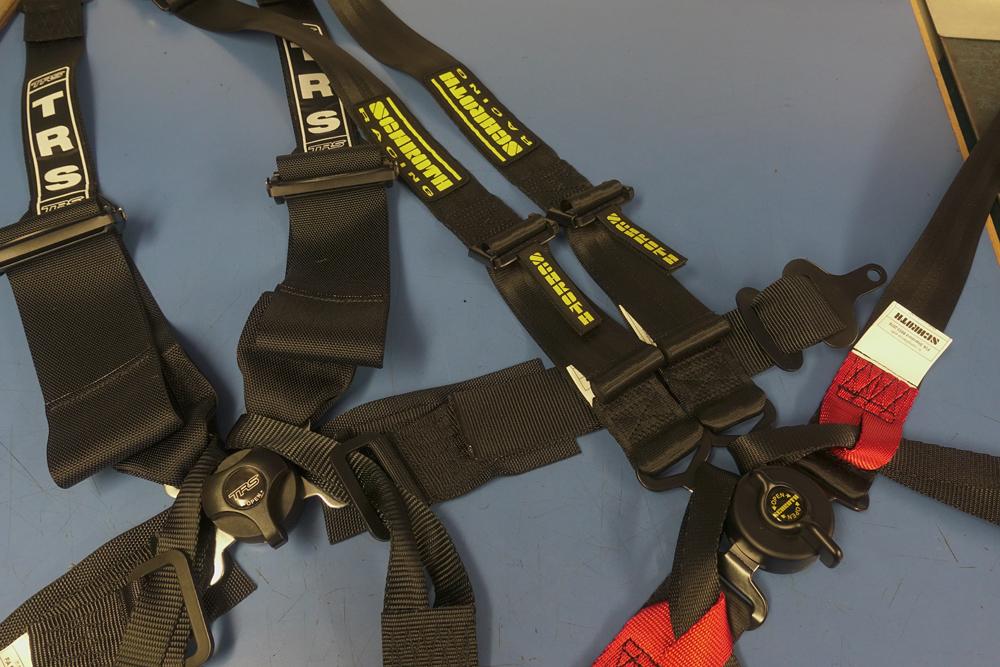
Firstly, both of these harnesses are homologated to FIA standard 8853-2016.
At first glance, the obvious difference is that the Schroth version uses 2” straps all the way around and even through the shoulder strap adjusters. The TRS version uses 2” webbing over the FHR and then 3” webbing on the lower section of the shoulder straps.
The other thing to note on first appearance is that the Schroth version has less “mass” to it, it's less bulky than the TRS version, which comes in handy in a single seater cockpit. When looking at physical weight however, the TRS harness is actually 100-200 grams lighter than the Schroth.
Shoulder Straps and Adjusters
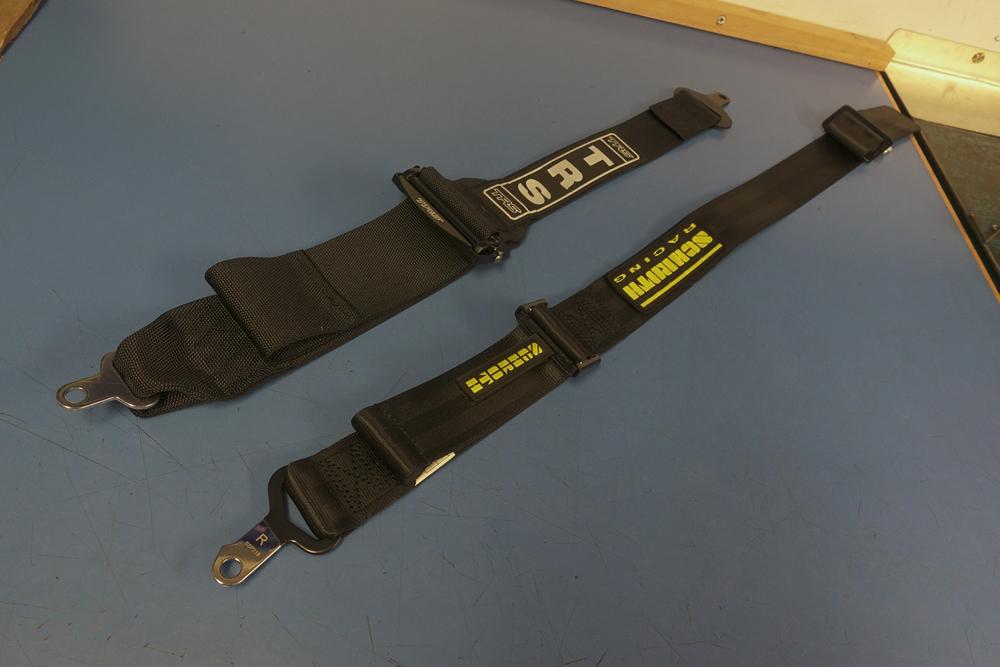
There are quite a few differences to point out with regards to the shoulder straps. As we have explained already, the first striking difference is the width of the straps. Then we move on to the adjuster buckles. Both of these are the lightweight “easy-adjust” versions which save a lot of hassle tightening, and more importantly loosening.
The Schroth has a nice bright tag on the adjuster to make it visible to the driver and/or person buckling you up and it is quite a bit smaller in width also. On the Schroth straps there are small sections of round foam inserted into the end of the excess strap, making it super easy to grab and pull on when you have race gloves on to tighten up. The TRS harness has a sewn loop to help pull the harness tight.

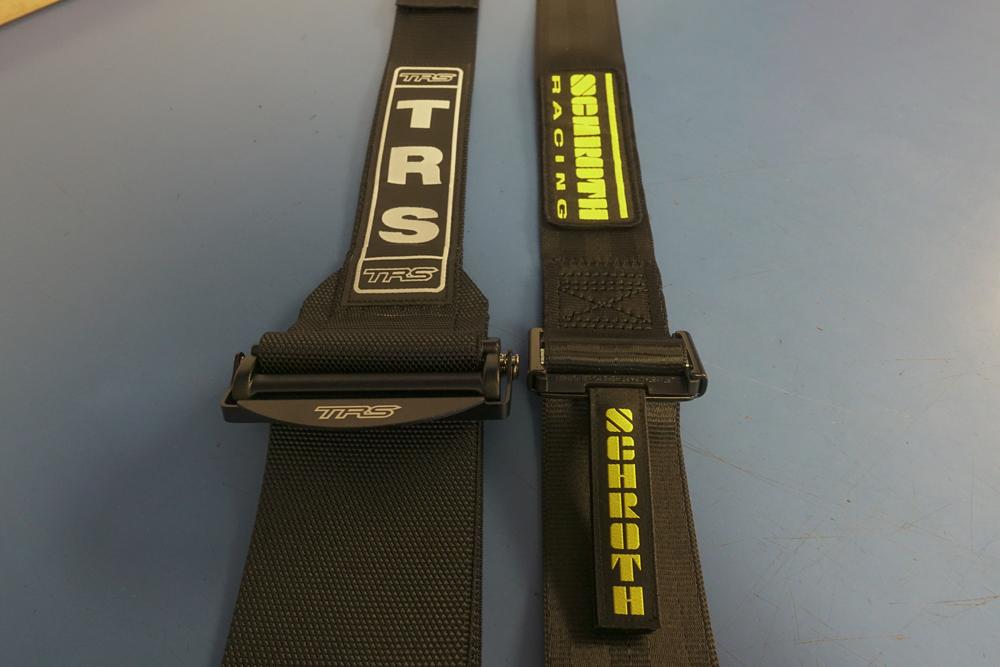
The next thing has been really well thought out. The plate which plugs into the release mechanism is sided (left or right) and therefore angled meaning that this guides the shoulder straps into the release mechanism making it more comfortable and again easier to do up when sat in position. The TRS harness uses quite a small plate here, which means that 3” webbing is squeezed through a tiny little plate. This doesn't look quite as neat and makes clicking the plate into the release mechanism slightly more clumsy.

Single seater harnesses are traditionally bolt-in on all 6 points. Both of these harnesses are bolt in all the way around. The difference between them is that the TRS uses a cranked tongue shaped plate with an 8.8mm hole through the centre for the bolt and is supposed to be used with an M8 bolt. The Schroth has a cranked triangulated plate which is nearly twice as thick as the TRS version. The crank in the plates moves the webbing away from the floor to prevent chaffing. The bolt hole on the Schroth is larger. Schroth supply a top-hat spacer which fits perfectly into the bolt hole and then means an M8 or 5/16” bolt is securely fastened to the chassis leaving no slop or loose fitting of the bolt in the harness.
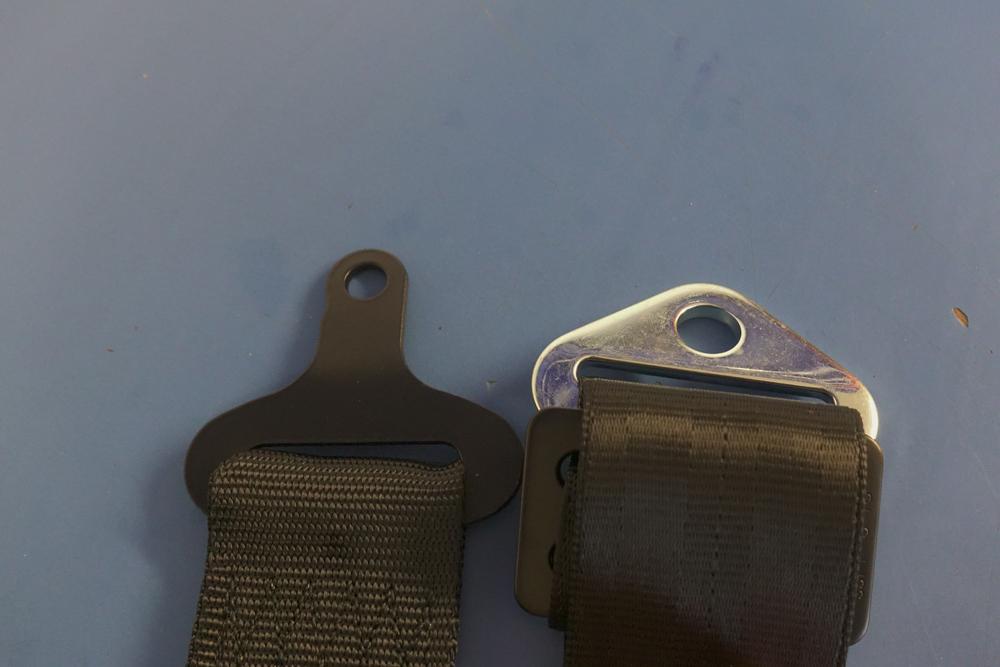

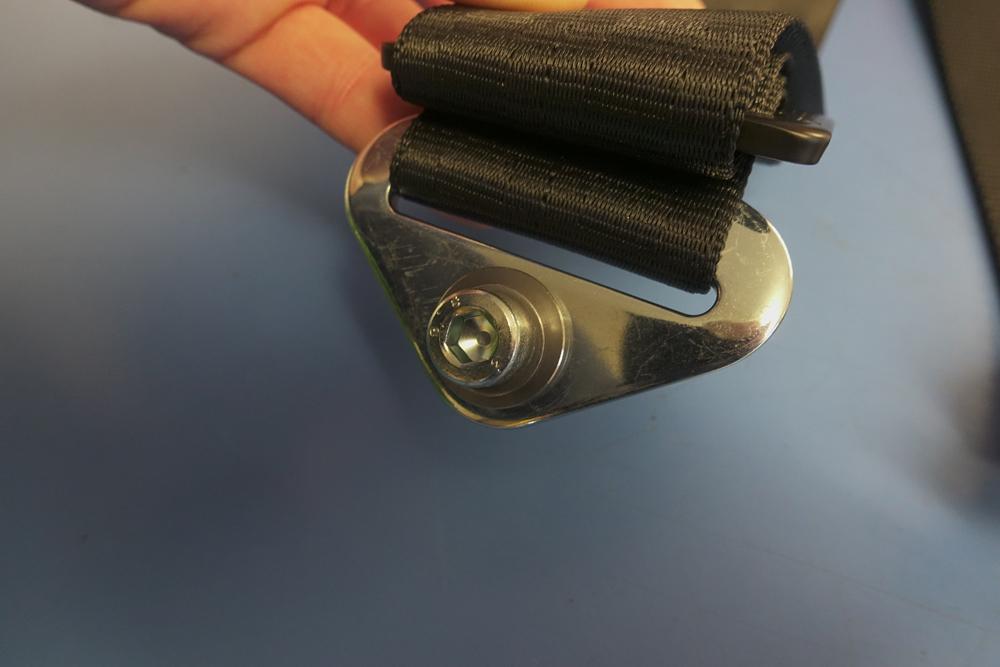
The last thing to note on the shoulder straps is that the Schroth version has a sliding bar which means the length of the shoulder strap can be adjusted to suit different vehicles or sizes of drivers. Ideal for cars like Radicals, other sports racing cars and possibly even some Caterham applications. This may not be ideal on some single seaters due to the rear bulkhead restrictions and also space issues around the shoulders, but it’s a nice option for adjustment even if it’s not always needed.
Waist Straps & Release Mechanism
The TRS release mechanism is lightweight thermoplastic which is relatively small in comparison to the Schroth version and ideal in a cramped single seater cockpit. The Schroth version is a heavier weight unit made from metal which feels good and robust. Both are a standard rotary mechanism as is normally used on this style of harness.
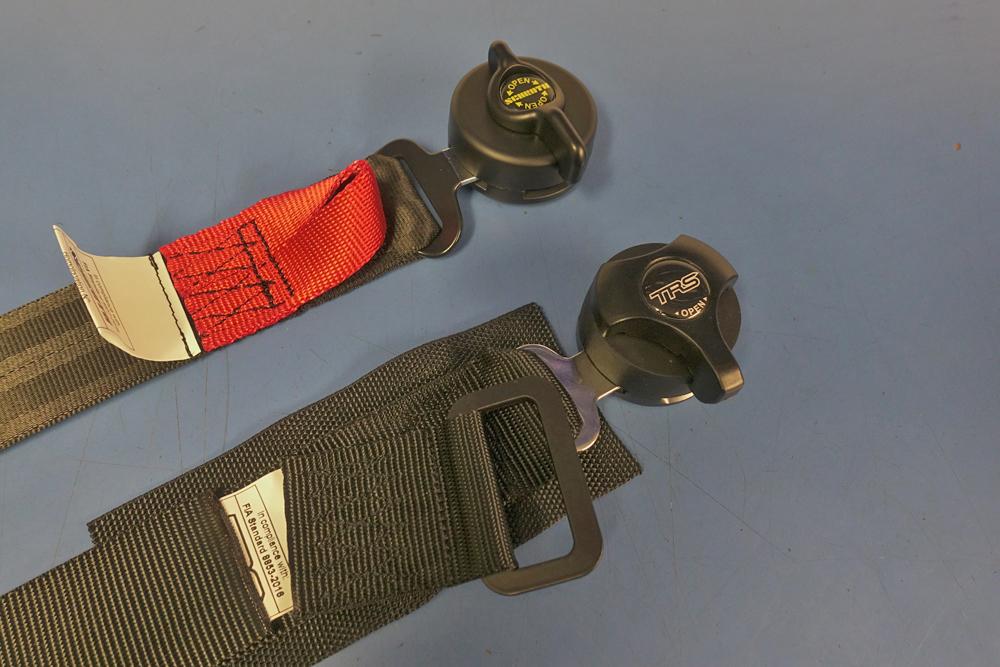
This style of 'Single Seater' harness has what is known as a loop and d-ring crutch strap. This is pretty self explanatory, the waist straps have a loop at the top which the shoulder strap slides through and it then clips into the release mechanism. The waist strap traditionally has a metal 'd-ring' sewn to it which the crutch strap slides through.
The Schroth version however uses a sewn loop on the waist strap rather than a metal d-ring. This is not only lighter but should also increases comfort.


Another thing to note here is the difference in overall 'mass' of harness webbing around the release mechanism. This section of the harness is the area which is undoubtedly the most cramped. Schroth have paid attention to this in particular and as the images below show, the difference should be noticeable when strapping yourself in.
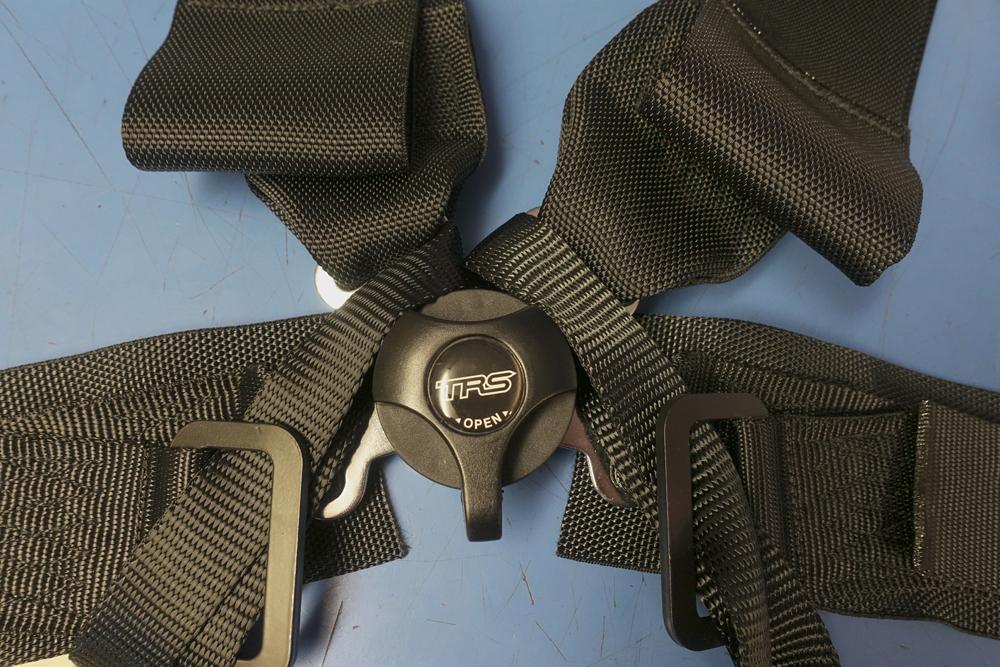


The TRS version uses the traditional 'pinch bolt' type fixings for the waist straps whereas the Schroth has adopted the same bolt in plate as the shoulder straps by using a thick triangle plate with an adjuster bar meaning the harness can be used in various applications.
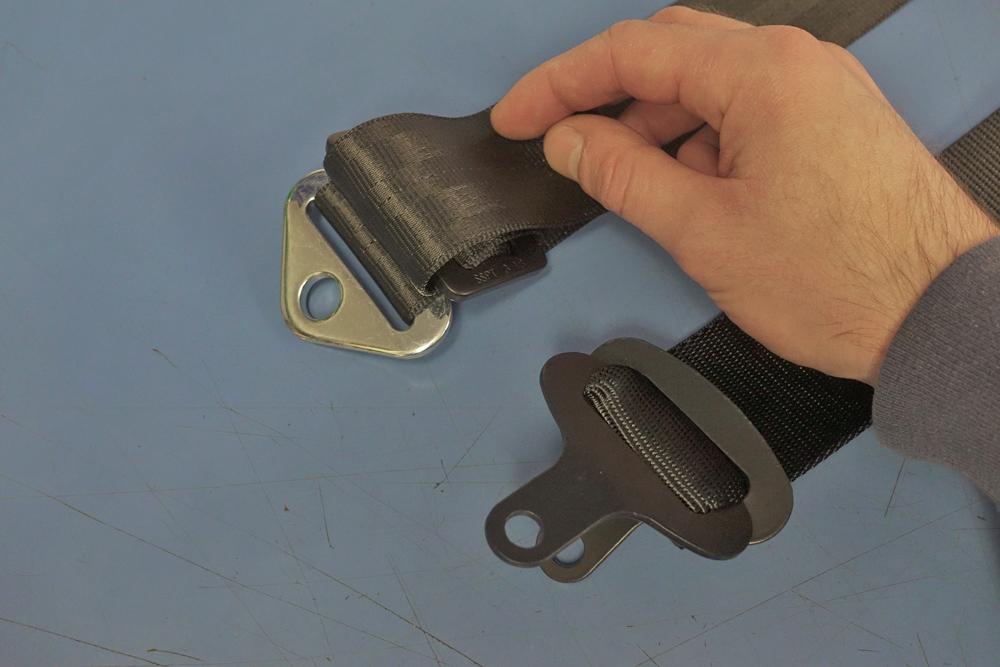


Conclusion
The Schroth harness is a very well thought out product which overcomes many of the usual issues associated with the single seater harness and you can see reason for the £100 extra in cost. The TRS version is also a great quality product, widely used across all disciplines of Motorsport and produced in the UK.
Whether your decision is based mostly on price or spec, both the TRS and Schroth harnesses are quality products that we wholeheartedly endorse, making either an excellent choice. The decision's all yours and we hope that the above helps in understanding the finer detail and reason for price variation.



